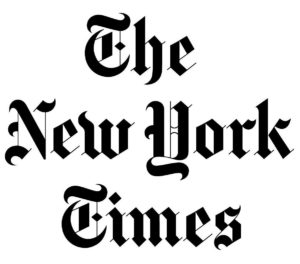JUST Report
The COVID-19 Corporate Response Tracker: How America’s Largest Employers Are Treating Stakeholders Amid the Coronavirus Crisis
Over the course of this year, the coronavirus and economic crises have created an urgent, unprecedented opportunity for CEOs and corporate leaders to put purpose-driven leadership and stakeholder capitalism into practice. Companies have faced extraordinary operational and financial challenges, and with every industry and business tested in unique ways, we’ve seen corporate leaders take distinct courses of action to address the needs of their stakeholders – particularly their workers, customers, and local communities – throughout the crisis. And with the national reckoning with racial injustice that rocked our country this summer – and in the midst of the contested 2020 election and mounting challenges to democracy – there is an even greater urgency to implement policies and practices that support all Americans – including Black and Brown people who have been disproportionately impacted by the coronavirus crisis.
We created this Tracker in March – starting with America’s 100 largest public employers and evolving to the full Russell 1000 universe of employers as of November 5 – to help assess what’s happening on the ground. In addition, our COVID-19 platform includes data analysis on key issues (paid sick leave, hazard pay), polling insights from our ongoing survey work with The Harris Poll, as well as corporate leadership stories, interviews, and events.
The chart below provides a snapshot of the types of actions Russell 1000 companies have taken to date in response to the pandemic, with the comprehensive interactive tracker beneath it.
The COVID-19 Response Tracker
Delve into the COVID-19 Corporate Response Tracker below.
- Explore corporate policies and practices via the blue “tags.” You can also search by policy, company, industry, the estimated number of employees, and date updated.
- Click on the “drill down” button to explore details on specific actions. Link to original data sources by clicking on any policy/practice (in a blue box).
- Click on or search for a company to see a comprehensive list of its responses.
- Scroll below the tracker to read our methodology with definitions and classifications.
- Share suggestions for improvements by contacting us.
- Connect with our business development team to request access to the underlying data.
November 5 Update
The Tracker now features the actions of the 928 Russell 1000 companies included in our 2021 Rankings of America’s Most JUST Companies. The underlying data have been updated as of August 31, 2020, though all data pertain to companies’ early responses to the pandemic, a period of time that we have defined as March 1 to June 26, 2020. We will continue to update this data beyond the initial early response phase with any new data provided by companies. In this iteration of the tracker, a value of “No” indicates that a company has confirmed, through our annual corporate engagement process, that it did not implement that policy or practice in response to the COVID-19 pandemic.
Methodology
This tracker uses information found on company websites, corporate press releases, and reputable news sources to evaluate what America’s largest public employers – companies in the Russell 1000 index – did as part of their initial response to the COVID-19 pandemic. The tracker currently looks at 20 dimensions, or “tags,” of company response – from the provision or expansion of paid sick leave policies to layoffs and furloughs.
When a company meets criteria for a particular response (listed below), it receives a “tag” in the tracker above, indicating that it has announced that policy or practice. Each tag links to the original data source. By using the “Drill Down” feature, you can explore more detailed information about a company’s response – for example, by filtering by the tag “Community Relief Fund,” you can find out how much a company has committed or donated to helping communities or organizations with relief efforts. The 20 tags – and their underlying details – include:
Adjusted Hours of Operation: Company is adjusting the hours of operation of some or all of its services or retail or branch locations.
Back-Up Dependent Care: Company is offering back-up dependent care services to employees or providing additional paid time off for employees dealing with school closures or interruptions in existing care arrangements.
Closed Stores or Suspended Services: Company is voluntarily closing some or all of its retail or branch locations or suspending some or all of its operations or services. Drill down to explore details about which locations or services are impacted, whether companies are continuing to pay employees – hourly or otherwise – affected by store closures or service suspensions, what percent of base pay these employees are being paid, and whether contract workers are also receiving pay during store closures or service suspensions.
Community Relief Fund: Company is committing funds to help communities or organizations dealing with relief efforts. Drill down to explore details about how much a company has given or pledged in cash contributions to COVID-19 relief.
Community Services: Company is providing direct in-person or in-kind community services to help with relief efforts, such as organizing food banks, blood drives, or even providing free softwares for schools.
Corporate Leadership: Company’s leadership has taken actions to mitigate financial risks and support the well-being of workers, customers, and communities during the COVID-19 pandemic. Drill down to explore details about whether a company’s CEO, C-Suite executives, and/or board members are taking a pay cut, and how much of their pay (as a percent) is being cut.
Customer Accommodations: Company is offering special accommodations to customers. Drill down to explore whether companies are offering discounts or price cuts to their customers, allowing customers to defer payment of goods and services, continuing to provide essential utilities to customers who are unable to make payments at this time, and/or providing services to vulnerable populations such as reserving the first hour of shopping for high-risk customers.
Financial Assistance: Company is offering a grant, bonus, wage increase, or other financial assistance to employees to help curb income volatility as a result of changes in hours of operation, closures, or service suspensions, or reward workers who are on the frontlines risking their health and safety to keep business running. Drill down to explore details about whether a company is adding funds or expanding eligibility for its employee grant programs, whether a company is offering a one-time bonus to employees and the minimum and maximum amounts available to them, whether a company has increased hourly wages permanently or temporarily for its employees and the amount by which wages have been increased, as well as whether a company has increased overtime pay, and if so, at what rate.
Furloughs or Unpaid Leave: Company has announced furloughs – an employer-mandated suspension of work without pay – or other types of employer-mandated unpaid leave in order to offset lost revenues. Drill down to explore details about how many weeks the furlough is expected to last, the number or percent of employees impacted, whether a company is continuing to provide employees with their health care benefits during the furlough, and whether a company is providing additional support for furloughed workers. These additional supports range from fully covering health care premiums for workers (a step beyond just continuing to provide health care benefits) to setting furloughed employees up with temporary jobs at other companies.
Government Support: Company is participating in a government program or receiving financial aid to support its workers and business. Drill down to explore whether a company is accepting government aid under the CARES Act, how much in government aid they are poised to receive, and whether a company is participating in Short Time Compensation or work share programs to protect against layoffs.
Health and Safety: Company announced added health and safety measures during the pandemic to protect workers and customers alike. Drill down to explore details about whether a company has implemented additional health and safety precautions and/or provided free personal protective equipment (PPE) – such as masks or gloves – for its workers.
Hiring Workers: Company announced or is actively offering new job opportunities for workers facing unemployment during the pandemic in order to address increased community demand. Drill down to explore details about how many workers companies are planning to hire and whether these positions are permanent or temporary.
Layoffs: Company announced layoffs in order to offset lost revenues. At this time, we are working to track how many workers are affected by layoffs. Drill down to explore details about the number or percent of employees laid off and whether a company offered a severance package, provided outplacement services like resume workshops or career counseling to laid off employees, or committed to rehiring laid off employees.
Non-Executive Pay Cuts: Company is cutting pay for non-executive level employees. Drill down to explore details about whether a company has announced cutting the pay of its non-C-suite employees, and if so by what percentage.
Paid Sick Leave: Company is expanding its paid sick leave policies or developing a new paid sick leave policy for workers who have been infected by COVID-19 or are under quarantine for COVID-19. Drill down to explore details about whether a company’s paid sick leave offering was an expansion or a response to COVID-19 only, how many days of paid sick leave are available to workers, what percent of base pay workers are being paid while on sick leave, and whether there are barriers – such as requiring an official diagnosis or a positive test result – to accessing paid sick leave. In cases where companies disclose the number of weeks of paid sick leave available to workers, we assume that each week contains five working days (1 week of paid sick leave = 5 days of paid sick leave). In other cases where companies disclose the number of hours of paid sick leave available to workers, we assume that each day contains eight hours of work (40 hours of paid sick leave = 5 days of paid sick leave).
Production, Distribution, or Logistical Support: Company is shifting operations to prioritize production, distribution, or logistical support for COVID-19 related products. Drill down to explore details about whether a company is producing or manufacturing goods and services related to the fight against the pandemic, procuring or distributing goods and services (such as cleaning supplies or food) to meet increased demand , and/or engaging in logistical activities (such as transporting products between producers and distributors or developing applications) and whether these production, distribution, or logistical supports are being provided for free or donated by the company.
Relaxed Attendance Policies: Company is relaxing its attendance policies for employees who are at higher risk of being infected with COVID-19, are uncomfortable with coming into work during the pandemic, or have become infected. Drill down to explore details about whether companies are offering unpaid sick leave and/or waiving their absenteeism policies for employees who miss work during the pandemic.
Remote Work and Modified Schedules: Company is voluntarily shifting its nonessential employees to a remote work or work-from-home arrangement in response to the pandemic or are enacting alternative scheduling practices. Drill down to explore details about whether a company is voluntarily shifting its nonessential employees to a remote work or work-from-home arrangement and/or modifying employees’ work schedules by enacting A/B scheduling, staggered shifts, split shifts, or another alternative for health and safety reasons.
Supply Chain Impacts: Company has announced information about impacts or adjustments to its supply chain, including whether there have been job cuts or the company has made a commitment to maintain business.
Voluntary Leave: Company is establishing a program by which an employee can take a leave of absence from work for a set amount of time – either paid or unpaid – in order to help the company reduce operating expenses. Drill down to explore whether such a policy exists, the length of the leave offered, whether it is paid or unpaid, and the potential pay rate.
Each corporation’s number of U.S. employees is based on the company’s total employment count in 2019 if business in the U.S. accounted for more than 95% of revenues or long-term assets. These headcounts are further adjusted for all additions of employees through acquired businesses or subtractions of employees through divested businesses. In cases where the U.S. headcount is not disclosed in company filings or publicly available material, we estimate the total U.S. employment size by multiplying the global employment size by the ratio of U.S. sales and long-term assets to global sales and long-term assets.
Data collection began on March 19, 2020, and the Tracker was last updated on August 31, 2020 at 6:00 PM EST.
Updates Archive
JUNE 9 UPDATE: The Tracker is now following the actions of America’s 301 largest employers, and has expanded to include two new corporate actions, as well as several new dimensions to existing actions that companies are taking in response to the COVID-19 pandemic. In addition to increasing the number of companies we track, here are the specific changes to what we’re assessing:
- We added a new tag on Voluntary Leave, which evaluates whether employees can volunteer to take a leave of absence from work for a set amount of time – either paid or unpaid – in order to help their company reduce operating expenses. We’re tracking the existence of the policy, the length of the leave, whether it is paid or unpaid, and the potential pay rate.
- We added a new tag on Non-Executive Pay Cuts, which evaluates whether a company is cutting pay for non-executive level employees, and if so, by what percentage.
- We modified the previous tag on Corporate Leadership, which now tracks separately the pay cuts taken by CEOs and other C-suite executives.
- We modified the previous tag on Financial Assistance, which now includes details on the minimum bonus amounts offered, whether a company has increased overtime pay, and if so, at what rate.
APRIL 22 UPDATE: The tracker expanded to feature three new tags, as well as several new drill down details to existing corporate actions that companies are taking in response to the COVID-19 pandemic. Here’s what has changed:
- We modified a previous tag on Executive Pay Cuts to Corporate Leadership, which now tracks both board pay cuts and executive pay cuts.
- We expanded the drill down feature for Furloughs, which now includes details about the length of the furlough, the number or percent of employees impacted, whether employees will continue to receive health benefits, and whether companies are providing any additional support to employees who are furloughed.
- We added a new tag on Government Support, which assesses whether a company has received government aid or participated in Short Time Compensation or work share programs to protect against layoffs.
- We added a new tag on Health and Safety, which encompasses information about health and safety precautions and the provision of free personal protective equipment (PPE) – such as masks or gloves.
- We expanded the drill down feature for Layoffs, which now includes details about the number or percent of employees laid off and whether a company offered a severance package, provided outplacement services like resume workshops or career counseling to laid off employees, or committed to rehiring laid off employees.
- We modified a previous tag on Manufacturing and Service Shifts to display more information about Production, Distribution, and Logistical Supports that companies are providing in response to the pandemic, including details on whether companies are providing these supports for free.
- We modified a previous tag on Remote Work and Work from Home to provide more granular information about both Remote Work and Modified Schedules, which now includes details on whether companies have enacted A/B scheduling, staggered shifts, split shifts, or another alternative for health and safety reasons.
- We added a new tag on Supply Chain Impacts, which evaluates whether a company has announced any information about how its supply chain has been affected by COVID-19.
MARCH 31 UPDATE included the ability to drill down to see more detailed information on a number of key actions. For example select “Paid Sick Leave” from the “Drill Down” drop-down menu to see details about whether a company’s paid sick leave offering was an expansion or a response to COVID-19 only, how many days of paid sick leave are available to workers, which workers are eligible, and what percent of base pay workers are being paid while on sick leave.
Join Us in Building an Economy That Works for All
JUST Capital is tracking corporate actions in response to the COVID-19 crisis and elevating best practices to incentivize better business behavior. Make a gift today to help us accelerate and amplify this urgent work.
Media Coverage of This Report




